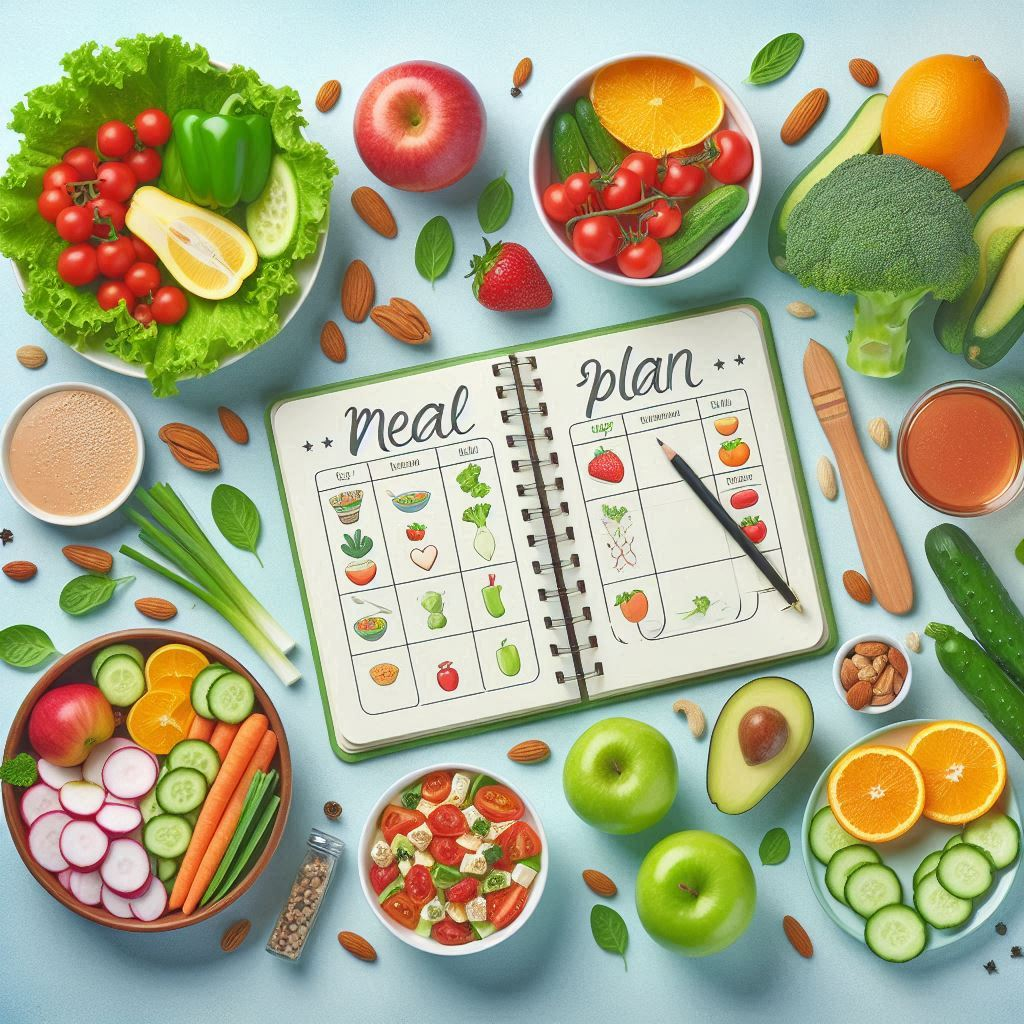How to Create a Meal Plan: A Step-by-Step Guide for Healthy Eating
Creating a meal plan can simplify your life, save time, and improve your overall health. Whether you’re looking to eat healthier, save money, or reduce food waste, a well-thought-out meal plan can help you achieve your goals. In this guide, we’ll walk you through the steps to create an effective meal plan tailored to your needs.
Why Meal Planning Matters
Keywords: benefits of meal planning, why meal planning is important
Understanding the significance of meal planning can motivate you to start:
- Saves Time: Planning meals in advance saves time during the week by reducing the need for daily decisions.
- Healthier Choices: When you plan, you’re more likely to choose nutritious foods instead of opting for fast food or processed snacks.
- Budget-Friendly: A meal plan can help you stick to a budget by reducing impulse buys and food waste.
Tools You’ll Need
Keywords: meal planning tools, best meal planning apps
To make meal planning easier, consider using these tools:
- Meal Planning Apps: Apps like MyFitnessPal, Mealime, or Plan to Eat can help streamline your planning process.
- Calendar or Planner: Use a physical planner or digital calendar to map out your meals.
- Recipe Database: Maintain a collection of your favorite recipes for quick reference.
Step-by-Step Guide to Creating a Meal Plan
Step 1: Determine Your Goals
Keywords: meal planning goals, setting meal planning objectives
Start by clarifying why you want to create a meal plan:
- Health Goals: Are you aiming to lose weight, gain muscle, or simply eat healthier?
- Time Constraints: How much time can you dedicate to cooking each week?
- Dietary Restrictions: Consider any allergies or dietary preferences you or your family members may have.
Step 2: Choose a Meal Planning Format
Keywords: meal planning formats, how to organize meal plans
Decide on a format that works best for you:
- Weekly Planning: Plan meals for the entire week, including breakfast, lunch, dinner, and snacks.
- Batch Cooking: Prepare large quantities of meals in advance to save time during busy weeks.
- Flexible Planning: Plan meals loosely, allowing for changes based on your mood or schedule.
Step 3: Gather Recipes and Ideas
Keywords: meal planning recipes, finding meal ideas
Collect recipes that fit your goals and preferences:
- Recipe Sources: Browse cookbooks, food blogs, or Pinterest for inspiration.
- Favorite Meals: Include meals that your family enjoys to ensure everyone is satisfied.
Step 4: Create a Weekly Menu
Keywords: creating a weekly menu, meal planning template
Now it’s time to put together your meal plan:
- Designate Meal Times: Outline which meals you’ll have on specific days. For example:
- Monday:
- Breakfast: Overnight oats
- Lunch: Quinoa salad
- Dinner: Grilled chicken and veggies
- Tuesday:
- Breakfast: Smoothie
- Lunch: Leftover grilled chicken wrap
- Dinner: Spaghetti with marinara sauce
- Monday:
- Plan Snacks: Don’t forget to include healthy snacks to keep your energy up throughout the day.
Step 5: Create a Shopping List
Keywords: meal planning shopping list, grocery list for meal planning
Once your menu is set, create a shopping list based on the ingredients you need:
- Organize by Category: Group items by category (produce, dairy, grains, etc.) to make shopping more efficient.
- Check Your Pantry: Before heading to the store, check what you already have to avoid unnecessary purchases.
Step 6: Prepare Meals in Advance
Keywords: meal prep tips, how to prep meals
To save time during the week, consider prepping meals in advance:
- Batch Cooking: Prepare large portions of meals like soups, stews, or casseroles that can be frozen and reheated.
- Chop and Store: Pre-chop vegetables and store them in airtight containers for quick use during the week.
- Cook Proteins Ahead: Grill or bake proteins in advance to add to salads, wraps, or bowls.
Step 7: Stay Flexible and Adjust as Needed
Keywords: adapting meal plans, flexibility in meal planning
While having a plan is great, flexibility is key:
- Listen to Your Body: If you’re craving something different, don’t hesitate to swap meals.
- Adjust for Leftovers: If you have leftovers, incorporate them into your meal plan to minimize waste.
Conclusion
Creating a meal plan can transform your approach to food, making healthy eating easier and more enjoyable. By following these steps, you’ll not only save time and money but also develop a healthier relationship with food.
Call to Action
What are your best meal planning tips? Share your experiences and favorite recipes in the comments below to inspire others in their meal planning journey!







Be First to Comment